THE PLUS RHINOPLASTY IN KOREA
Big Nose Rhinoplasty in Korea


RHINOPLASTY FOR
Big Nose Rhinoplasty in Korea
the plus rhinoplasty in Korea
Big Nose Surgery
What is Big Nose Surgery?
Big nose rhinoplasty is a surgical procedure to correct and reshape parts of the nose that are larger than desired. This may include narrowing wide nasal bones, reducing large nostrils, or refining a bulbous nasal tip. The goal is to create a nose that is natural-looking and balanced with the rest of the face, resulting in a more harmonious and three-dimensional appearance. This surgery can help achieve a more defined and appealing facial profile.
Image a. Osteonomy | Image b. Tip Plasty | Image c. Alar Reduction
1. Wide Nose Bone
In case of a wide nose bone, osteotomy is performed. Osteotomy for big nose surgery involves making precise cuts in the nasal bones to reshape and reduce the size of the nose. This procedure is typically used to narrow a wide nasal bridge or correct the overall structure of the nose. During the surgery, the surgeon carefully breaks and repositions the nasal bones to achieve the desired shape and proportions.
The steps generally include:
- Incision: The surgeon makes small incisions inside the nostrils or across the columella (the tissue between the nostrils).
- Bone Cutting: Special tools are used to make controlled cuts in the nasal bones.
- Repositioning: The bones are then gently moved to a new position to create a more narrow and aesthetically pleasing nasal profile.
- Stabilization: The nose is stabilized using internal splints or packing, ensuring the bones heal in the new position.
Osteotomy is a crucial part of big nose rhinoplasty because it allows for significant changes in the shape and size of the nose, helping to create a more harmonious and balanced facial appearance. The key to a successful osteotomy is the precision and expertise of the surgeon, as careful handling of the bones is essential for achieving natural-looking results and ensuring proper healing.
2. Nostril Reduction
Nostril reduction, also known as alarplasty or alar base reduction, is a surgical procedure aimed at reducing the size of large nostrils to create a more balanced and proportionate appearance. This procedure is often performed as part of a larger rhinoplasty or as a standalone surgery if the primary concern is the width or flare of the nostrils. Here’s a brief overview of how it is done:
- Incision: Small, strategically placed incisions are made along the natural creases where the nostrils meet the cheeks. This ensures that scars are as inconspicuous as possible.
- Tissue Removal: The surgeon removes a small wedge of tissue from the base of each nostril. The amount of tissue removed is carefully calculated to achieve a symmetrical and proportionate result.
- Reshaping and Suturing: The remaining tissue is then meticulously reshaped and stitched together to create a smaller, more refined nostril. The sutures are typically internal, hidden within the natural folds of the skin.
- Recovery: The recovery period involves some swelling and bruising, which usually resolves within a few weeks. The final results become more apparent as the nose heals.
Nostril reduction can significantly enhance the overall appearance of the nose by creating a more harmonious balance with other facial features. It is a relatively minor but highly precise procedure that requires the skill of an experienced surgeon to ensure natural-looking and symmetrical results.
3. Large Nose Tip
Rhinoplasty for a large nose tip, sometimes referred to as tip rhinoplasty or nasal tip plasty, focuses on reshaping and refining the size and shape of the nasal tip to create a more balanced and aesthetically pleasing appearance. Here’s a detailed look at how this procedure is done:
- Incision: Depending on the complexity of the surgery, the surgeon may choose an open or closed rhinoplasty approach:
Open Rhinoplasty: An incision is made across the columella (the tissue between the nostrils), allowing the surgeon to lift the skin and gain better visibility and access to the nasal structures.
Closed Rhinoplasty: Incisions are made inside the nostrils, which leaves no visible scars but provides limited access to the nasal tip structures. - Reshaping the Cartilage:
Cartilage Reduction: Excess cartilage in the nasal tip (often the lower lateral cartilages) is carefully trimmed or sculpted. This helps to reduce bulbosity and create a more refined tip.
Cartilage Grafting: In some cases, the surgeon may need to add cartilage grafts to support and reshape the tip. These grafts can come from the patient’s own septum, ear, or rib. - Reshaping the Skin: Once the underlying structures are reshaped, the skin is redraped over the new nasal framework. The incisions are then closed with fine sutures.
- Recovery: The recovery process includes some swelling, bruising, and discomfort, particularly around the nose and eyes. Initial recovery typically takes about one to two weeks, but subtle changes and final results may continue to develop over several months.
Post-surgery, the patient will have follow-up appointments to ensure proper healing and address any concerns. The goal of rhinoplasty for a large nose tip is to achieve a natural-looking, balanced result that complements the patient’s facial features, thereby enhancing their overall appearance and confidence.
When is Big Nose Surgery Needed?
1. When the bone of the nose bridge is wide, resulting in a lack of three-dimensional effect on the features.
2. When the tip of the nose is large and blunt, giving a stuffy impression.
3. When the nostrils are wide, giving a blurry impression.
4. When the nose occupies a large proportion compared to the face.
Before and After Different Big Nose Surgery Methods
1. In case of a wide nose bone, osteotomy is performed. See the before and after surgery side views below.
See more before and after surgery photos.
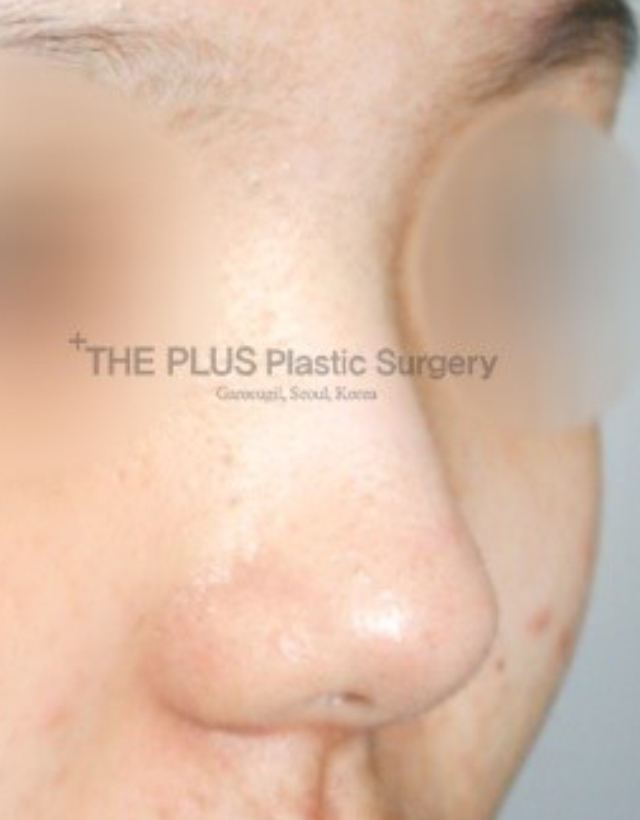
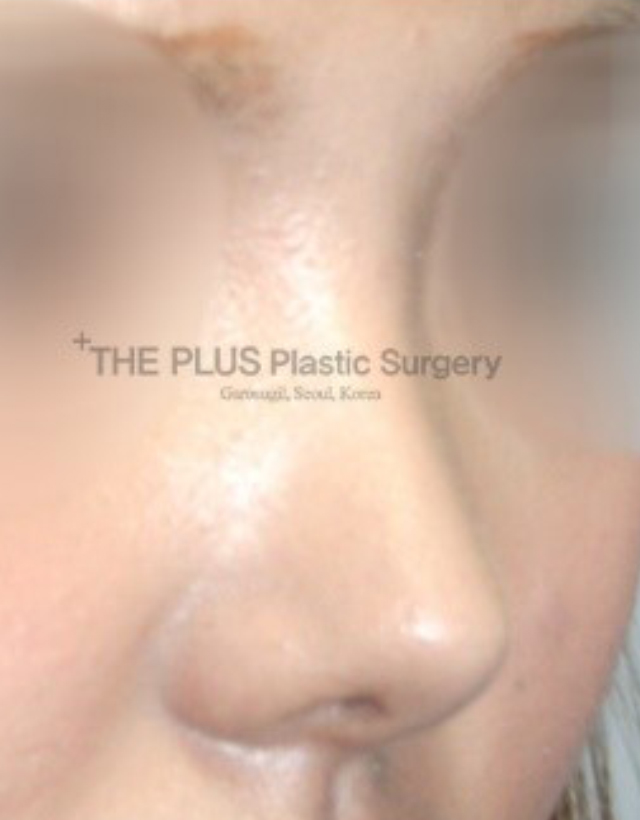
2. In case of a wide nose bone, osteotomy is performed. See the before and after surgery front view below.
See more before and after surgery photos.
Before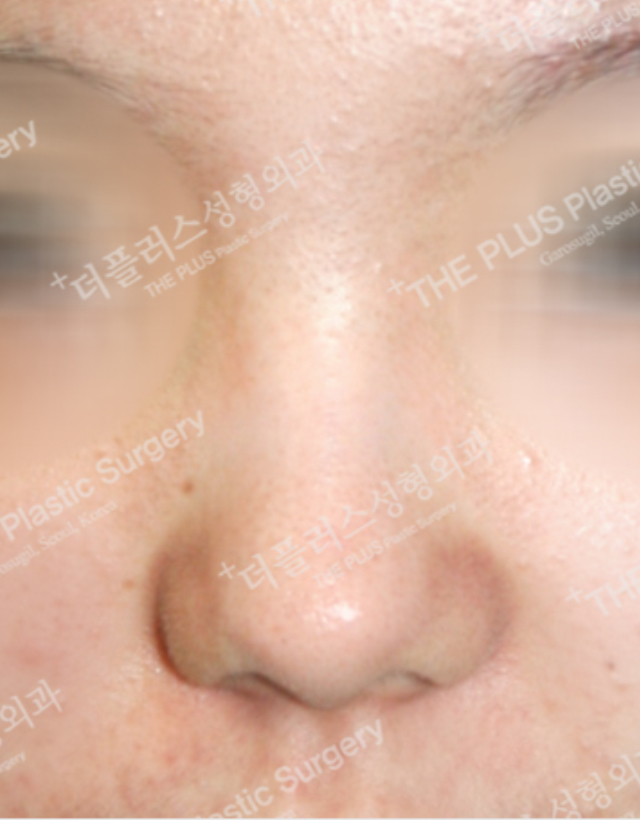 | After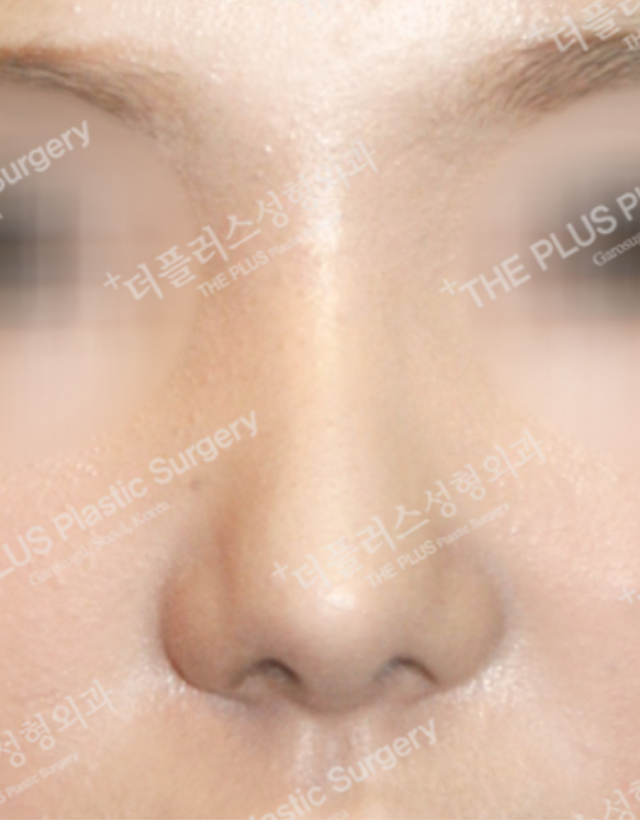 |
3. In case of large nostrils, nostril reduction is performed. See the before and after surgery photos below.
See more before and after surgery photos.
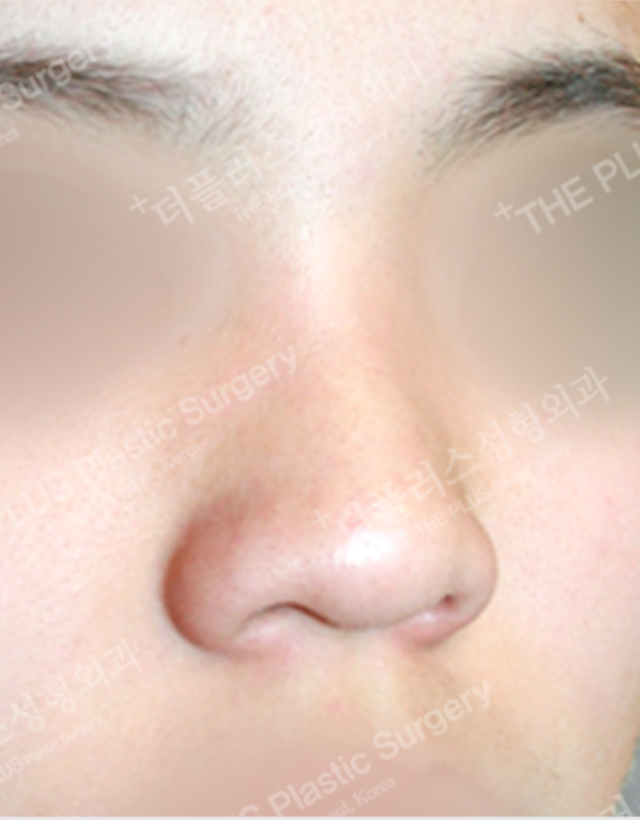
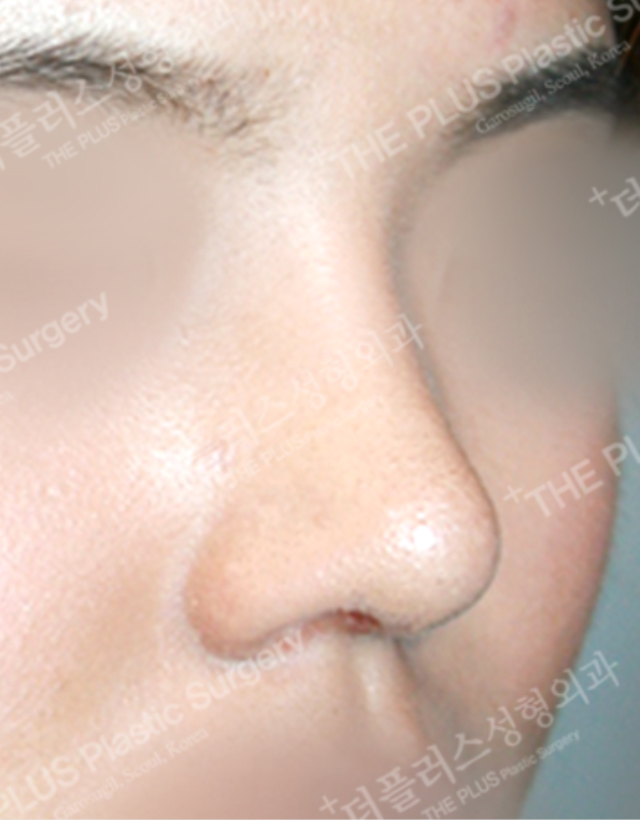
4. In case of a large nose tip, rhinoplasty is performed. See the before and after surgery front views below.
See more before and after surgery photos.
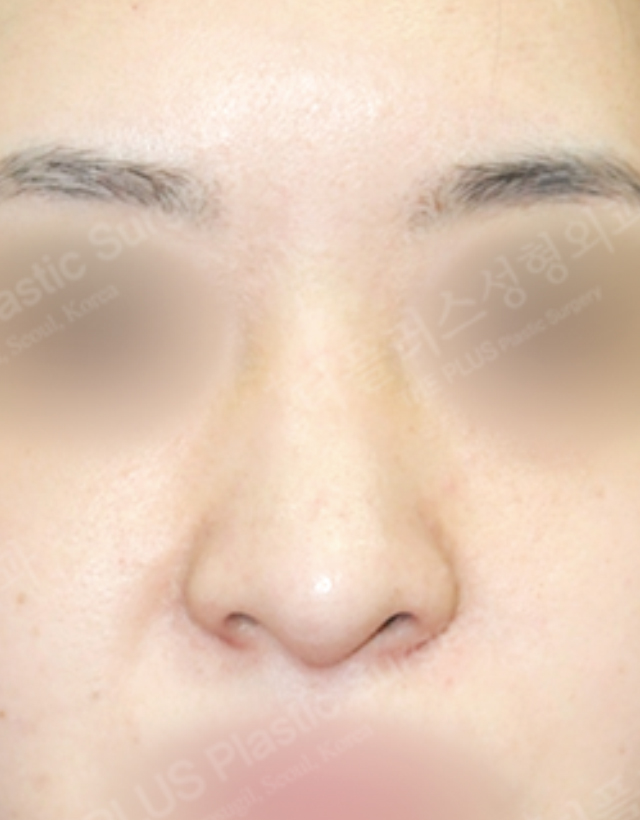
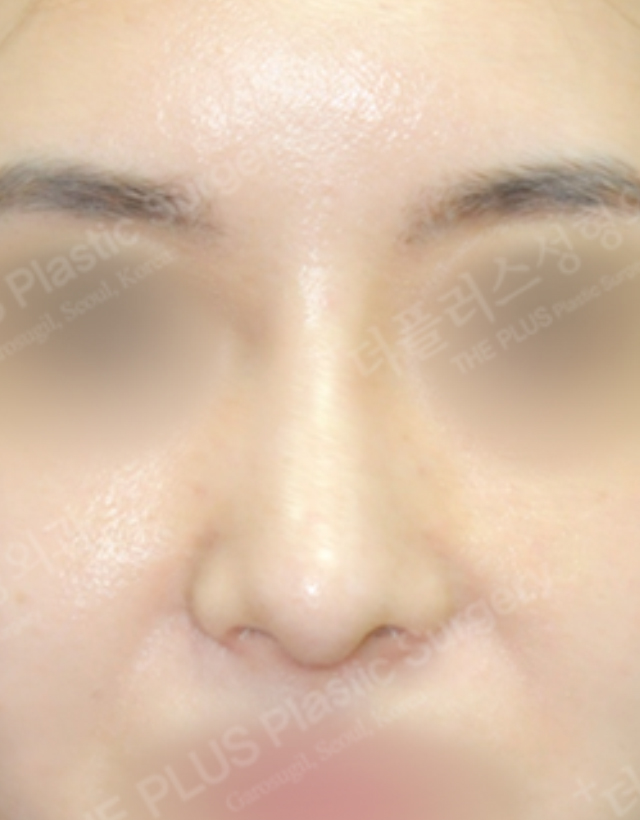
5. In case of a large nose tip, rhinoplasty is performed. See the before and after surgery side view below.
See more before and after surgery photos.
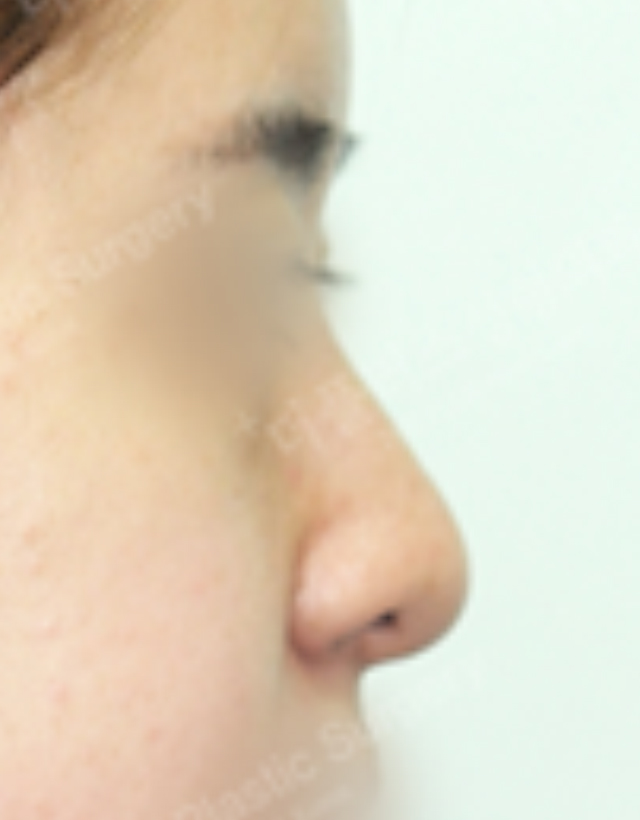
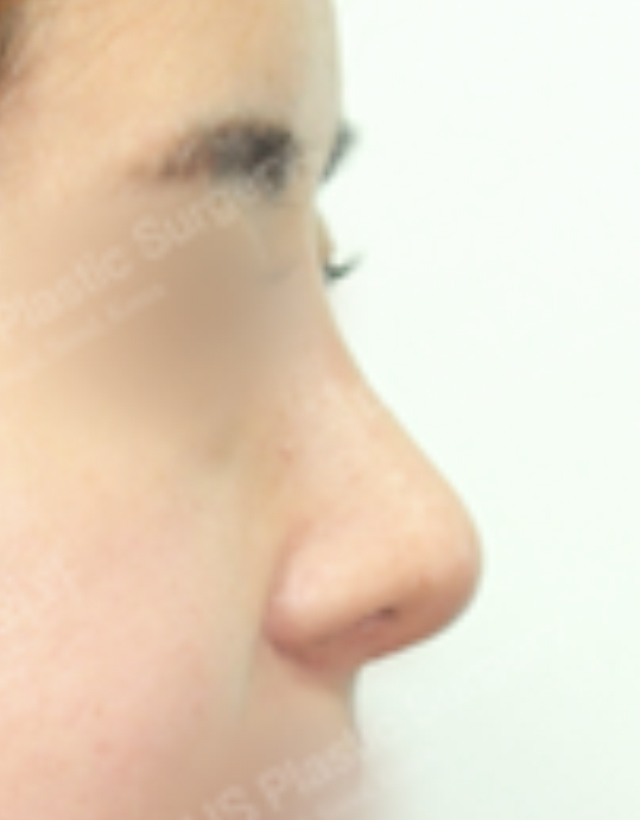
View the research papers from The Plus Plastic Surgery medical team.
Frequently Asked Questions
What does Big Nose Rhinoplasty at THE PLUS PS involve?
Big Nose Rhinoplasty at THE PLUS PS involves surgical techniques to reshape larger parts of the nose, including narrowing wide nasal bones, reducing large nostrils, and refining a bulbous nasal tip. The procedure aims to achieve a natural-looking and balanced nose that complements the facial features.
Why is osteotomy important in Big Nose Rhinoplasty?
Osteotomy is crucial in Big Nose Rhinoplasty as it allows for significant changes to the nose’s structure by precisely cutting and repositioning the nasal bones. This technique helps achieve a narrower nasal bridge and improved proportions, providing a more harmonious facial appearance. The procedure requires the skill of an experienced surgeon for optimal results.
What is the recovery like following Big Nose Rhinoplasty at THE PLUS PS?
Recovery after Big Nose Rhinoplasty at THE PLUS PS typically involves some swelling and discomfort, which can be managed with prescribed medication. It is important to follow the surgeon’s aftercare instructions, which may include avoiding strenuous activities and sleeping with your head elevated. Patients often return to normal activities within a couple of weeks, but full recovery can take several months.
